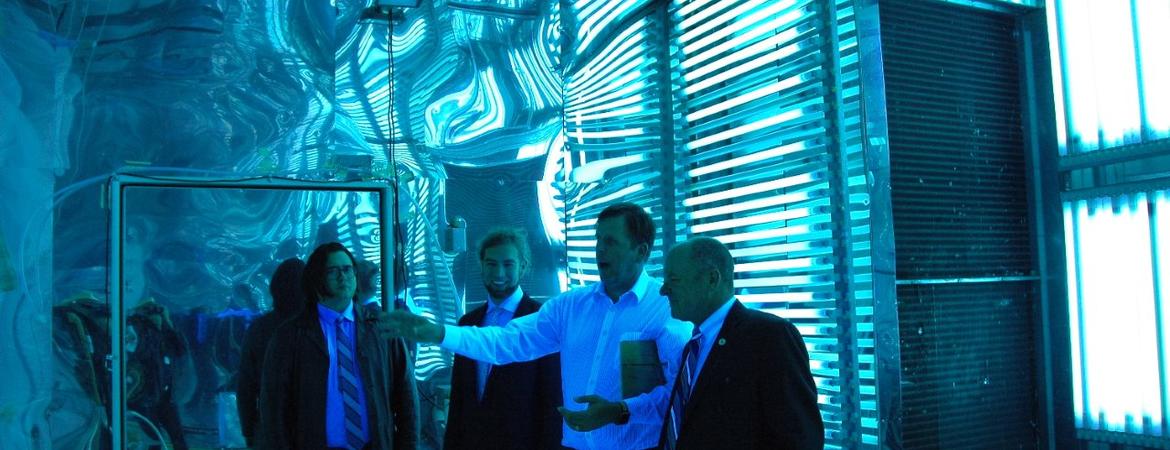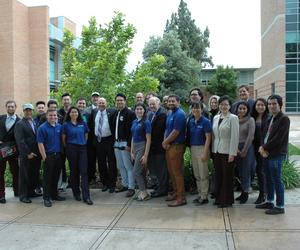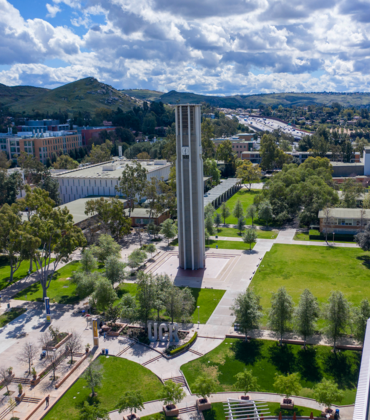
A number of environmentally focused activities with the U.S. Environmental Protection Agency (EPA) will be continuing, thanks to the renewal of a Memorandum of Understanding (MOU) between EPA’s Region 9 and the University of California, Riverside. This interaction includes student internships, workforce development, and unique mentorship opportunities aimed towards creating a broader and more diverse workforce. Additionally, students are granted enhanced access to EPA research facilities, instrumentation, and expertise through cooperative research and development agreements.
On Thursday, May 16, EPA and UCR joined to reaffirm their 2010 MOU designed to increase EPA’s outreach to diverse and underserved communities by offering internships, joint projects, and scientific research opportunities to students and faculty members. The day was highlighted with activities from UCR’s Office of Sustainability the Center for Environmental Research and Technology (CE-CERT).
The event celebrates the leadership UC Riverside and EPA have demonstrated in moving our country closer to sustainability. Since the commemoration of the MOU, several student projects have come to fruition including the award-winning Husk-to-Home project, a termite-resistant particle board out of rice husk, and NOx-Out, a selective catalytic reducer prototype that can be retrofitted to any small engine for the reduction of harmful emissions. Both projects are led by Kawai Tam, professor of teaching with the department of chemical and environmental engineering.
“We are engaged with UC Riverside because our future demands collaborating with a university of both distinction and diversity. We are not only proud to be associated with one of the most diverse universities in the nation but humbled in knowing that nearly 60 percent are first in their family to complete a four-year degree,” said Mike Stoker, EPA Region 9 Administrator.
During the ceremony, Stoker recognized two recent EPA research grant recipients under the People, Planet and Prosperity Program (P3). UCR has the most P3 projects of any UC campus, a factor that has been influenced by the MOU. Professor Sundararajan Venkatadriagaram and his student team were awarded for their Multi-Sensor Fusion for Low-Cost, Automated Woodstoves project, which proposes to develop a simple inexpensive technology to reduce levels of indoor and outdoor pollutants generated by wood stoves in cold environments across the United States, particularly within disadvantaged Native American communities.
The second grant mentioned was for the Green Chemistry Approach to Pulping Hemp as an Industrially Relevant Renewable Fiber for Construction project led by assistant research engineer Charles Cai and his student team. The project seeks to develop a simpler and less toxic pre-treatment process for pulping hemp fibers and proposes that these fibers then be used as a reinforcing agent in cement, replacing petroleum-based construction materials.
“The EPA is a great partner with us and the renewal of this MOU is important as it provides unprecedented opportunities to advance research in sustainability. By creating internships for a more diverse workforce, we are engaging some of the most brilliant minds with fresh perspectives to address some of our greatest challenges in environmental protections and economic outcomes,” said Matthew Barth, UCR’s Faculty Director of Sustainability and Director of CE-CERT.
UCR’s CE-CERT is nationally recognized for being at the forefront of developing technologies for a sustainable future. The center focuses on environment, energy and climate protection, water, sites, transportation, recycling and waste management, procurement, food, and academics and research. This MOU will continue to encourage students of diverse backgrounds to pursue degrees in environmental fields of study and help EPA to attract a diverse workforce.




